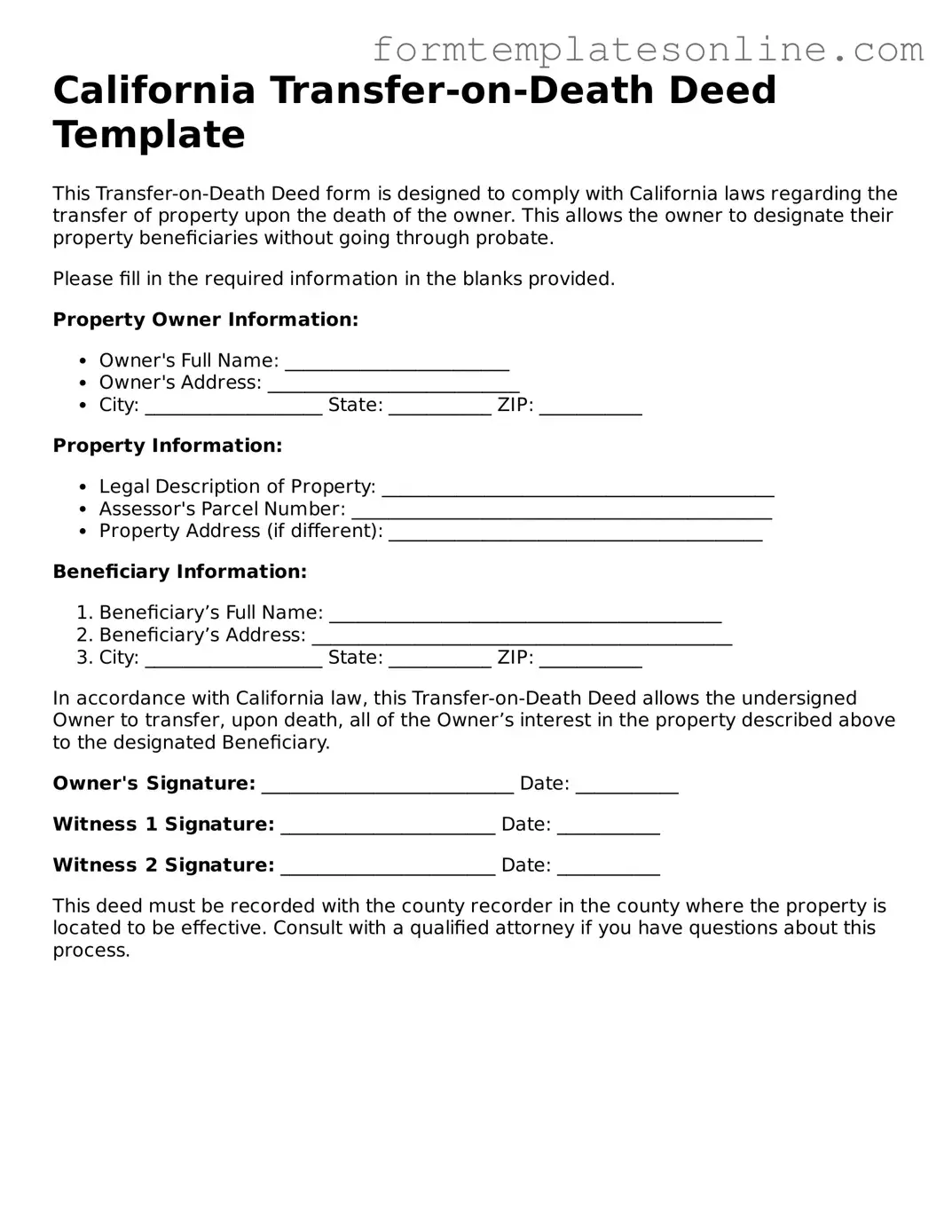What is a Transfer-on-Death Deed?
A Transfer-on-Death Deed (TODD) is a legal document that allows property owners in California to transfer their real estate to a designated beneficiary upon their death. This deed helps avoid probate, making the transfer process simpler and faster for heirs.
Who can use a Transfer-on-Death Deed?
Any individual who owns real property in California can utilize a Transfer-on-Death Deed. This includes homeowners, co-owners, and those holding property in a trust. However, it is important to ensure that the property is not subject to any restrictions that may prevent the use of a TODD.
How do I create a Transfer-on-Death Deed?
To create a TODD, you must complete the appropriate form, which is available through the California government website or local county recorder's office. After filling out the form, you need to sign it in front of a notary public and then record it with the county where the property is located.
Can I revoke a Transfer-on-Death Deed?
Yes, a Transfer-on-Death Deed can be revoked at any time before the property owner's death. To revoke it, you must complete a revocation form, sign it, and record it with the county recorder's office where the original TODD was filed.
What happens if I do not name a beneficiary in the Transfer-on-Death Deed?
If you do not name a beneficiary, the property will not transfer upon your death. Instead, it will become part of your estate and will be subject to probate. It is crucial to designate at least one beneficiary to ensure a smooth transfer of ownership.
Are there any tax implications with a Transfer-on-Death Deed?
Generally, there are no immediate tax implications when executing a Transfer-on-Death Deed. However, beneficiaries may be subject to property taxes and potential capital gains taxes when they sell the property. It’s advisable to consult a tax professional for specific guidance.
Can I use a Transfer-on-Death Deed for all types of property?
A Transfer-on-Death Deed can only be used for residential real estate in California. It does not apply to personal property, commercial real estate, or properties held in certain types of trusts. Always check the specific details of your property before proceeding.
What if my beneficiary predeceases me?
If your designated beneficiary passes away before you, the property will not automatically transfer to their heirs. Instead, it will revert to your estate and go through probate. To avoid complications, consider naming an alternate beneficiary in your TODD.
Is legal assistance necessary to complete a Transfer-on-Death Deed?
While legal assistance is not required to complete a TODD, it can be beneficial. A legal professional can help ensure that the deed is filled out correctly and meets all legal requirements, reducing the risk of future disputes or complications.
How does a Transfer-on-Death Deed affect my mortgage?
A Transfer-on-Death Deed does not affect your existing mortgage. The mortgage remains in your name, and the beneficiary will inherit the property subject to any outstanding mortgage obligations. It’s important to inform your lender about your plans to use a TODD.
